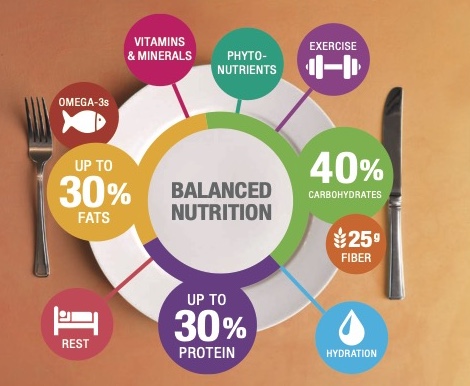Your cart is currently empty!

Nutrition Tips for Distance Runners
Notes on Nutrition
Disclaimer: I am not a licensed nutritionist or dietician. I’ve just done countless hours of research on the topic so that my athletes don’t have to. Although, I do encourage everyone to learn. NIH.gov is your friend.
Variety is the price of life
Eating healthy doesn’t have to be complicated. You can get into the weeds about how many calories you burn each day and the percentages of macro and micro-nutrients in each meal, but ultimately if you enjoy a variety of colors and textures and sources of food each day, you probably have your bases covered. That said, there are a few things you can do to make sure you’re not creating any deficits.
- Eat for nutrients, not calories: This means, cut out empty calories during most of the day and instead choose nutrient-dense alternatives. Veggies over pastries, nuts over chips, milk or water with electrolytes over soda, juice or even sports drinks. There is a place for simple carbs, like before, during or immediately after hard workouts, but in a phrase: cut out the junk.
- Fuel with a purpose: The goal for endurance athletes is to minimize dehydration and delay glycogen depletion. Too often we are eating based on cravings and bad habits. Instead, try waking up each morning knowing what the day holds. If you’ve just got a maintenance run, then skip the breakfast grains and fuel up on veggies and unsaturated fats. If an intense workout or long run is on the docket, grab some toast or oats and drizzle on a little honey. Basically, your macronutrient needs will differ slightly depending on the day’s activity level.
- Sleep: Most people don’t usually think of sleep when they are dialing in their nutrition, but how you sleep and otherwise handle stress can have a huge impact on the hormones that regulate how you create energy as well as how well you absorb the nutrients in your food. Stress caused by lack of sleep can trigger carb burning even in a fat adapted athlete. Protein synthesis occurs mostly while you are sleeping.
Macronutrients and their missed contents
Carbohydrates
Simple Carbs: Sugar, syrup, honey, fruit juice, white bread, pastries, white pasta.
Simple carbs should only be consumed immediately before, during or after hard efforts, such as races and workouts. All simple carbs aren’t created equal. Sucrose is a poly-sugar, making it harder to digest during activity, resulting in blood sugar instability. For intra-workout fueling, aim for a 6% solution of simple sugars, like fructose and glucose (fruit juice or similar sports drink). Honey is great during workouts because it has already been digested by the bees!
Complex Carbs (mostly fiber and starches): Whole-grains (bread, brown rice, pasta, quinoa), vegetables (broccoli, sweet potatoes, etc.), legumes (lentils, beans) and fruit (apples, berries, oranges, etc).
For the rest of your carbohydrate intake focus on nutrient rich complex carbs, where you also benefit from necessary micronutrients, like fiber, vitamins and minerals. Depending on activity level, the human body requires around 1.4 – 4.5g of carbs per pound of body weight per day. So get chewing!
Proteins
Meat and eggs are the easiest way to get complete proteins, but you can also combine plant sources to get all the essential amino acids your muscles need to grow and prevent breakdown!
The average human needs more protein than they are getting just to maintain muscle mass, and it gets even harder as we age. The current science says active individuals need to consume around 1 gram of protein for every pound of bodyweight daily to maintain muscle mass. That’s about 26 large eggs worth of protein for a 185 pound individual. Don’t get all of your protein from eggs though. A wide variety of protein sources will enhance absorption.
The latest research shows that the window for protein intake after a workout is actually 24 hours, but for best results spread your consumption throughout the day. Aim to get .136g of protein per pound of body weight, including 10g of EAAs, within 2 hours of your workout, and then spread the remainder of your daily requirement throughout the day by consuming a balanced snack or meal every 3-5 hours. An after dinner snack rich with casein will increase the rate of protein synthesis and augment muscle strength overnight. To get the most out of the day’s training, aim to consume 27.5-40g of casein before bed.
Fats
The key to fat intake is moderation and balance. Fat sources are high in calories, so a little goes a long way! Total caloric intake from fats should amount to around 30-35% of your daily total. Fat is a good fuel source for low-moderate intensity activities, and the whole foods are rich in micronutrients. Fat may have the slowest rate of energy production, compared to carbs and ATP, but it also boasts the largest store, so the more we can use it during our daily grind, the more glycogen we’ll have left over for our hard efforts.
Monounsaturated fats: nuts, seeds, olive oils, avocados
Polyunsaturated Omega 3: Fish, nuts, seeds, leafy greens
Both monounsaturated fats and omega 3s are great sources of EPA/DHA, which are key to reducing chronic inflammation, the #1 nemesis of endurance athletes. They are also rich in EAAs.
Polyunsaturated Omega 6: Oil, fried foods, snacks, baked goods.
The key with unsaturated fats is to maintain the balance between omega 3s and omega 6s in the former’s favor. Humans should consume 1.1-1.6g per day of omega 3s to maintain the eicosanoid balance and reduce inflammation. However, more is not necessarily better, because if the balance is weighted too heavily toward omega 3s (2-15g per day of EPA/DHA combined) the body’s natural immune functions will suffer and bleeding might increase.
Saturated Fats: Butter, cheese, whole milk
These foods are high in cholesterol, but the unprocessed sources are also rich in micronutrients. As with all fats, don’t eliminate any of them but consume each in moderation.
In conclusion, there’s no need to be afraid of good fats, as they provide many necessary micronutrients that the body can’t produce on it’s own, as well as being a great source of fuel for low-aerobic efforts.
Hydration
Key Electrolytes: Sodium, potassium, magnesium
Re-hydrate first thing in the morning with 20 oz of fluids. Milk is a great source of hydration, as it contains more electrolytes than plain water, but there’s a reason we don’t drink milk before a run.
On top of fuel, our muscles need water, oxygen and electrolytes to work. Dehydration can sometimes feel like hunger, so stay on top of it to avoid confusing the two. Symptoms of dehydration start as soon as you lose 2% of your body’s water volume. When you lose more than 5%, serious dehydration kicks in.
While training, aim to consume 400-600 ml of fluids per hour (16oz/hr), preferably in 10-15 minute increments. During hard efforts and races, include 400mg of electrolytes per hour. Excessive intake of magnesium and potassium, 350mg and 15,600mg respectively, may lead to some health issues.
Do not exceed 800ml (22oz) of fluids in one hour.
Caveat Incoming
These are essential guidelines for building healthy eating habits, however, we are not running machines. Joy is also essential, so the occasional sweet dessert or night out with friends, while not always great for performance, can help us decompress. We work hard to get in shape, so a little reward now and then is warranted. Don’t overdo it, but also don’t feel guilty or stressed about enjoying your life.
For similar reasons, don’t feel like you have to count every calorie and micronutrient to make sure you’re healthy. The stress of that process alone outweighs the benefits. Instead, try and log your standard diet in an app like My Fitness Pal for a week every 3-6 months, just to check in on your baseline habits. If you find any deficiencies, make some tweaks to address them and carry on!

Leave a Reply